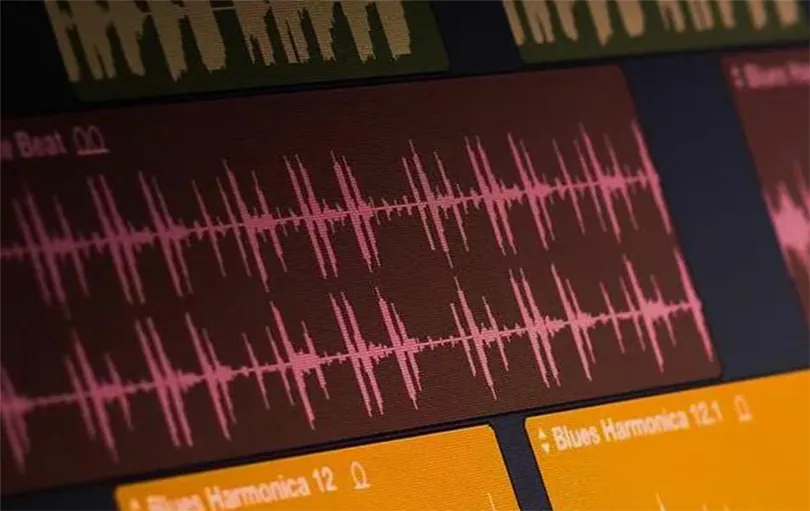How To Learn To Sing

When we listen to our favorite music, we can’t help but turn up the volume and start singing. For the majority of people, their abilities are quite sufficient. But if singing becomes a passion and you want to sing in front of your friends and the audience, then it’s not enough, as it takes a lot of work on your self-development, including posture and breathing. Let’s talk about how to learn to sing so that you could perform in front of your friends and not be afraid of their negative remarks and statements
Physical And Psychological Preparation For Singing
Before trying to learn to sing, it is important to consider some fundamental points.
Right posture. In order to get the singing out of your chest, it is important to have a good posture! The basic rule is to keep your back straight: standing or sitting, your legs should be parallel, your shoulders wide apart, and your feet on the floor. A straight back allows you to open your chest and fill your lungs completely with oxygen. The vertical position helps to get pleasant notes and better phrasing.
Abdominal breathing. To learn to sing well, you have to start with… breathing! As the voice is considered a wind instrument, breathing makes up 80% of the song. Slow and deep breathing exercises – inhaling and exhaling – stimulate the abdominal muscles. The technique is not learned overnight: breathing takes a lot of work.
For example, we can start by holding the air, and then exhale, saying the vowel sound “O”, regulating the release of air thanks to the diaphragm. In this way, we won’t immediately release all of the withheld air from the lungs, but we can modulate the exhalation and make it as constant as possible so that the voice is stable.
This is only the first exercise, but it has the double advantage of making us aware of movements and gestures that we sometimes perform naturally without paying much attention to them. It also promotes overall relaxation, creating the best conditions for singing.
Abdominal breathing engages not only the diaphragm, as the name implies, but also the abdominal muscles. It’s a work that’s done synergistically and requires some effort to do it the best way possible. But there is no need to fear the difficulty of breathing, especially since abdominal breathing comes into play even when we are not aware of it (e.g., when we are sleeping or yawning).
Listening and hearing skills. First of all, to learn to sing, you must learn to hear your voice. This develops your ear for music and over time helps you to believe in your abilities without stopping in front of the initial obstacles. This is essential for any singer. Vocal training, hard work, and persistence are used to gain confidence, to gradually realize yourself, and realize that anyone can have a beautiful voice and learn to sing. No one sings out of tune, it has more to do with “education” in music.
Some people are actually more talented than others, but any mediocre voice can be fixed and improved, which means that anyone can learn to sing. You need to learn to listen to yourself: sing, record and analyze carefully.
Understanding the characteristics of your voice. You need to know the basics of vocalism to learn how to sing, to improve your singing skills and vocal skills.
A beautiful voice while singing is a fact that depends on 5 basic elements:
- Breathing. Though it is a natural process, breathing for singing is something technical and very different. The singer can relax the body and improve airflow during inhalation and exhalation by using good breath control through the diaphragm and the chest opening;
- Diction. This is a skill that requires both good pronunciation and articulation of words;
- Rhythm. This is the knowledge of where to start and where to stop in relation to the flow of notes in a song. By the way, it is every great singer’s own secret;
- Tone Height. This is the quality of the note that allows you to perceive the sound as relatively high or low;
- Voice. Each person’s voice is unique. Body build, gender, respiratory tract, shape of vocal cords, age and many other factors determine the sound and quality of the voice, its type and range.
Performance of the independent exercises. To learn to sing, often you don’t need to be in a rush but work diligently and gradually to achieve your goal. Singing in a choir can be a good advantage, where you can learn many secrets.
Preparation for singing. Before you start singing, it is advisable to warm up your voice. The warm-up phases are necessary in order not to strain the vocal cords unnecessarily and not to strain the voice. This is a very important preparatory stage that should not be skipped.
Is It Possible To Learn To Sing If You Don’t Have An Ear For Music?
«You can probably sing much better than you think you can». This quote belongs to Bryan E. Nichols, an assistant professor of music at Pennsylvania State University and director of the Pitch Exploration Lab in the mentioned above university. The majority of people believe they’re unable to sing in tune, but less than 2 percent of the population exhibits true amusia, or the inability to identify pitch changes in music. Therefore, the answer to the question of whether everyone can learn to sing will be affirmative. If you can hear the intervals in a melody, sooner or later you will be able to vocalize them.
Don’t think of singing as a rare and unique talent. In fact, it is a typical human characteristic, as an example like the ability to walk. If you have a hearing problem that you would like to get rid of, here are a few methods that can help. Let’s start by understanding what ear for music is.
The ability to accurately reproduce a tune is a skill that depends on certain factors, all of which could be improved with training. We can distinguish the following by dividing this ability into different components:
- the ability to understand the melody you hear;
- memorization of the same passage;
- performing a given melody in one’s own voice.
Any of these components can be the cause of out of tune singing. It may be that we have difficulty understanding the melody we need to play, or we have difficulty remembering it. The most difficult component is the ability to reproduce the melody with the voice, because it involves moving from mental understanding to body action, and thus to the respiratory and speech muscles. It is important to understand your weakness and begin to work with it in order to learn to sing.
What To Do To Improve Your Ear For Music – 3 Key Points
1. Our body and tone
Breathing and posture significantly affect the sound of the voice. It is enough to sing a series of notes while crouched, and immediately it becomes clear how difficult this operation becomes. To correct posture in time, you can try to sing in front of the mirror if possible. So you can immediately see if something is wrong with the position of the torso: the back is a little crooked or the shoulders are dropped. If there is no opportunity to look in the mirror, just open your chest, relax your shoulders and keep your back and neck straight. It helps if you imagine that there is a string hanging vertically from the ceiling to the center of your head. This is a good way to release tension and restore the correct posture. Poor posture can compromise the sound of notes!
2. Listening, recognizing, tuning in
In the majority of cases, the problem is not with recognizing the note, but with reproducing it in the voice. For this reason, the first step in learning to sing in unison is to work on active listening skills. That means we have to develop the ability to listen deeply to the note or melody that needs to be played, and learn to listen to ourselves as we sing to understand if we are actually playing back what we heard earlier. Fortunately, the newest technology are helping with this in recent years.
According to a University of Sydney study, feedback is very helpful in understanding voice reproduction errors and correcting them with exercises. Today there are many mobile applications, such as Vocal Pitch Monitor, and online services on special sites that allow you to listen to the notes and find the correct performance.
3. Commitment and satisfaction
As with all businesses spheres, there are people born with stronger singing skills than others. But, in improving your intonation, there is nothing more important than an active commitment that leads to success and helps you to learn to sing! Sometimes the song seems impossible. However, you are sure to achieve results that initially seemed impossible. It is not an innate talent that makes a master, but continuous effort, flavored with great satisfaction when one manages to sing what previously seemed insane. That’s why to learn to sing in unison, it’s important not to give up trying and to celebrate every little victory, every tune you manage to sing. It’s a success you can enjoy to prepare for the next challenge! That’s a part of a good strategy.
Learning to sing in tune is not an easy journey, and can take something like from a few weeks to several years, depending on one’s level and predisposition. The skill is easier for those who grew up surrounded by music, but such a childhood is not an absolute necessity. If singing has become a passion, you can’t stop at imperfect intonation. You have to believe in yourself and keep practicing. Singing in a choir or lessons with a teacher would be a good way out. Another effective way is to find a club of like-minded people, the same lovers of singing, where you can sing and listen to others, discuss the details of the sound of the voice, listen to criticism, and make conclusions.
How To Improve The Tonality Of The Performance: 5 Tips From The Expert
A singer’s instrument is very much like a trumpet. The vocal cords that vibrate in each of us can be compared to the movement of the lips when a musician plays the trumpet and other musical instruments. Air passes in the tiny space between the strings, causing them to vibrate and produce sound. Likewise, air passes between the trumpet player’s lips and out of the mouth. Any hornist will tell you how difficult it is to convey pitch. It’s the same with singers – you have to have a good ear for music and practice all the time.
It is impossible to achieve perfection in intonation. Few people know that there are dissonant notes that some people don’t hear, as it takes a trained and fine ear to notice inaccuracies. This will always be perceived as feeling in perfect harmony with other instruments and as close to the “tuned” frequency as possible for singers.
5 tips on how to improve your intonation to catch the tone
- To talk to an expert. A voice instructor hears a variety of things every day, and he probably has a more developed ear;
- Try to sign up. We can’t always tell how well we are singing. Every time we rehearse, we need to record and listen to ourselves over and over again. This can be done with smartphone or computer sound enhancement software;
- To listen to the singers’ live performances. A studio recording is not the same as a live performance. You can listen to a piece of your favorite artist’s recorded song first and then immediately live or vice versa and spot the differences. It’s a good exercise to improve your hearing;
- To be in tune with the instrument. This is the most difficult exercise and should be done constantly by all singers, both professional and non-professional. Playing a note on the piano in tune and playing it in our voice helps our ear and brain practice to achieve the most accurate sound possible. It is an exercise in patience and deep concentration that, however, has amazing results;
- To listen to a lot of different music. There are good artists everywhere, so why listen to the same voices over and over again? It’s worth listening to at least one new album a month. It is also advisable to pay attention to artists of the past, which can reveal unexpected things.
Not everyone can be a singer, and not because you can’t learn to sing. You can be born lucky and have an inborn talent, but you have to train it all the time, too. True musicians always try to improve, until the end of their careers. Don’t think that being able to sing naturally is enough to become a singer. All famous artists have hours of rehearsals and concerts behind them because there is always room for improvement, development and change.
How To Learn to Sing In 9 Steps
Disappointments are possible everywhere. It seems that the song is completely mastered, with all the nuances rehearsed. But when the time comes to perform it in front of friends, their reaction is not as expected. It turns out that mistakes are found, and it can be unpleasant and painful to learn about them. Every aspiring singer reacts differently to this.
The 3 most common reactions to the mentioned mistakes are:
- Total rejection. The humiliation and frustration we experience leads us to think that singing is not for us;
- Denial. This is anger, an attempt to prove friends wrong. Singing is not abandoned, but any attempts by others to point out errors are immediately rejected;
- Acceptance. The persons understand that they were wrong, they may feel humiliated, angry, or, on the contrary, happy to hear criticism, but it does not matter. What really matters is that criticism is welcomed as valuable, which helps one understand where a mistake has been made and how to correct it.
Step 1. The proper attitude towards mistakes
The friend story doesn’t apply to a specific person, but it happens to almost everyone, regardless of qualifications, only the frequency changes. Someone who has been singing for a long time simply makes fewer mistakes than a beginner. This premise serves to make it clear that no one is free from mistakes. They must be properly perceived, evaluated, and used to improve skills.
Step 2. The most common mistakes:
- not enough breath to finish a musical phrase or exercise;
- wrong notes in a song or exercise;
- lack of rhythm;
- singing lacks accents and dynamics, it comes out flat and boring;
- usage of a timbre or mode that is not appropriate for the song being performed;
- no ability to sing with a vibrato.
Step 3. Understanding your strengths and weaknesses
Knowing the most common mistakes, you need to analyze your singing:
- Record yourself singing an exercise or a song you are learning;
- Point out any mistakes you notice;
- Be as objective and detached as possible during the audition;
- Point out the strengths as well;
- Correctly evaluate my strengths and weaknesses in my singing.
Example. Some notes are missing, but the rhythmic security is well felt. It lacks air in places, but the timbre is pleasant and confident enough.
Step 4. Vocal technique exercises
Exercises that develop vocal techniques are often neglected. They seem boring to beginners because: “I want to learn how to sing a song, what do I need these exercises for?” The answer is simple and lies in a few actions. Just try to sing any new song by notes or a fragment you’ve heard. Singing it effortlessly from beginning to end probably won’t work. That’s why you need exercises for vocal techniques.
Step 5. Muscle memory
Our brain controls our muscles and creates automatisms to simplify the process, which can be a dilemma if based on a series of incorrect repetitions of an exercise. Therefore, it is important to make sure that the exercise is done correctly and that there is no feeling of discomfort or embarrassment during the performance.
Step 6. Singing should be a pleasure
As mentioned in the previous paragraph, it is important to make sure that the exercises are done correctly. A vocal instructor can help you understand how to learn to sing and what mistakes to avoid, but no one can ever get into our bodies. Therefore, any feelings of discomfort during the performance of a passage or a note should be mentioned immediately. The vocal instructor should be aware of that in order to make the right conclusions in time.
Step 7. Exercises and songs should be adapted to the level of the singer
Many singers overestimate or underestimate themselves and end up believing they can’t sing. There are also three types of reactions possible:
- Failure. Too easy or too difficult an exercise or song is chosen, and the motivation disappears;
- Self-criticism. The person has enough ability to understand that the skill level is not appropriate for the chosen exercise or song. It is better to resume the effort at another, more appropriate time;
- Seeking help. The beginning singers realize that they are incapable of being objective and therefore want to entrust themselves to someone more experienced. This is where the figure of the vocal instructor comes in handy. They can provide an individual program of suitable exercises and songs.
Step 8. Individual program
Depending on the level, the vocal instructor usually provides an individual program. But there is definitely a basic one to start with, which is corrected and supplemented according to the student’s abilities. As a rule, a standard basic program includes:
- breathing exercises;
- physical warm-up;
- vocal warm-up (lip-tongue-twisting techniques);
- exercises in vocal techniques (vocalization-gammas-arpeggio-agility-vibrato-duration;
- choice of repertoire (songs).
Step 9. How long to exercise
Practice time is perceived very subjectively, but you can make an objective approximation. To learn to sing faster, it is optimal to practice a little, but often. It is better to sing for 15 minutes every day than for 4 hours straight once a week. This is due to the fact that our brain, after doing any activity continues to process it in the background and consolidate during sleep learned during the day. Therefore, more lessons, even short ones, lead to results faster in the long run.
The daily duration of classes depends on personal training and can last from 15 minutes to 2 hours a day. For beginners, it is better to start practicing with 15 minutes, as it is more difficult for them to concentrate due to the large number of errors that muscle memory will register. Those who have been singing for a long time should be able to sing for two hours straight every day.










